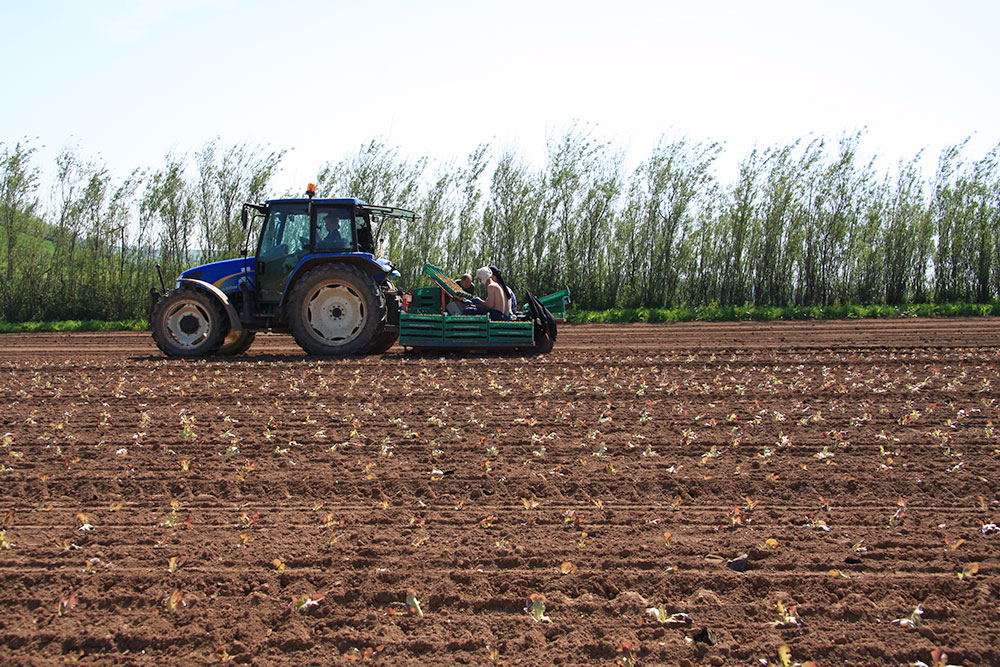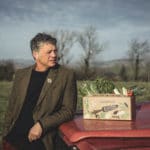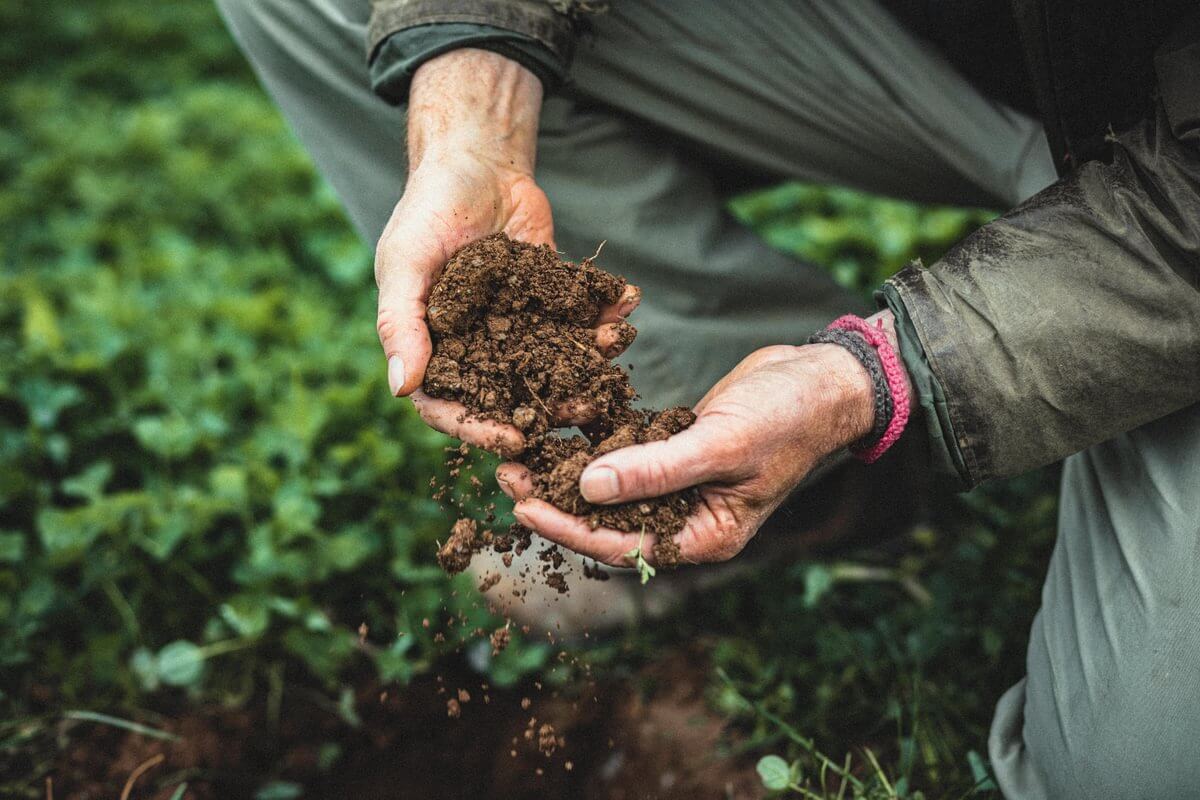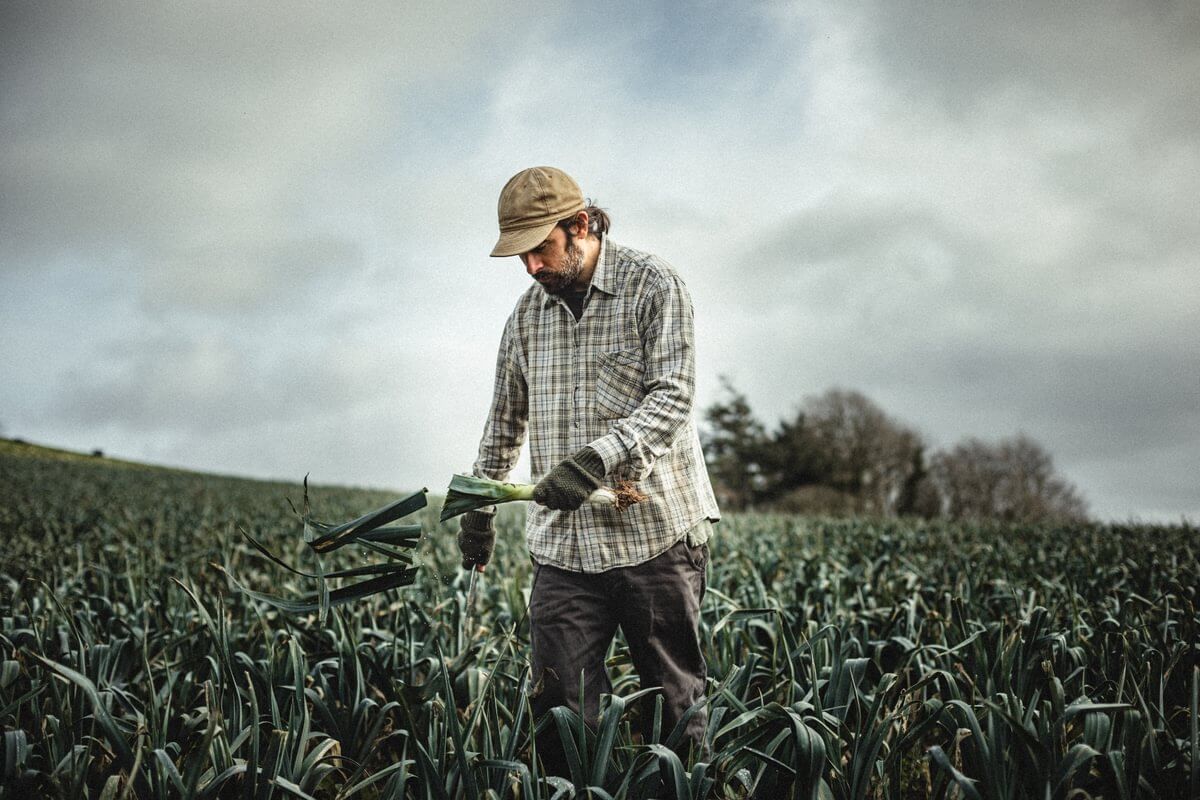The rain came just in time; we have now had over two inches, with more forecast over the next two weeks. As August progresses, the sun will get lower, the days shorter, and the dews heavier; even with our irrigation reservoirs low, I think we are going to be okay. Most of the leeks, cabbages, broccoli, cauliflower and kale that will be the mainstays of our greens through autumn and winter have been planted, and are rooting out quickly into warm, moist seedbeds. Our growers are heaving a collective sigh of relief.
Most of the crops have been planted into ‘stale seedbeds’: an ancient technique that creates beds with a loose, fine top layer of soil. These seedbeds were created across whole fields two months prior to planting, to conserve moisture, remove weeds, and allow nutrients to accumulate as residues in the soil break down. There is a growing modern consensus that, although this method is good for conserving moisture, it leaves the bare soil vulnerable to loss and degradation.
There is also a valid argument that leaving the soil bare of plants wastes an opportunity to use photosynthesis to sequester carbon. In search of a better way, which involves less or even no bare ground, we experimented with ‘strip tillage’ for our leeks: only cultivating narrow strips where the crop is planted, leaving stubble from a previous crop, or even a living cover crop, between the rows.
Agricultural practices normally evolve for a good reason – although this definitely doesn’t mean they cannot be improved on. Our traditional needs (to save water, reduce weeds, and so on) must now be balanced with the newer call to protect soils and sequester carbon. If we can find that balance, we will have found horticultural utopia – but we should be prepared for challenges along the way.
In practice, in a dry summer like this one, the cover crops between the tilled rows continued to suck up moisture – so that when we came to plant our leeks, there was not enough water left in the soil to support the crop. However noble our aim, without last week’s rain, the crop would have failed. It now looks as if the leeks will be saved, but we cannot rely on such good fortune every year. We must balance aspiration with some pragmatic compromise; I have no doubt that strip tillage can benefit our soil, but it remains to be proved that we can do it economically and reliably.










As a (very small Channel Island dairy, back in the day) farmer’s daughter myself it’s news like this that keeps me connected to Riverford. It’s not just the commercial side, what you sell that I can buy, or even the recipe hub, amazing though that is, including the veg hacks videos. It’s this extra dimension that reminds me week by week of my own roots and helps me stay a bit closer to the land and the life that I love.
I’m just reading George Monbiot’s ‘Regenesis’.
I could also throw in the livestock-farmer-authors such as John-Lewis Stempell.
What actually is it that serious, informed, people think is the right way to go?
For e.g.
Do I eat pasture-fed meat or refuse to touch it?
Fish?
Organic – can it actually feed everybody for a fair price?
We’ve made about 750 Riverford orders. Are we doing the right thing?
We spend about £600 a month on food for two people, that’s nearly 30% of our income, all of it for cooking from scratch, no meat, no wastage and no eating out. Not many can afford that and perhaps even fewer would want to. Is that what everyone should be paying? Or needs to pay to support decent agricultural practices?
The more I read the more confused I get.
@Robert John
I have been trying to figure out how two people can manage to spend £600/month on food… Have you tried buying bulk quantities of dried organic pulses to stretch your meals further? Quick sprouting alfalfa and brassica seeds for cheap addition to salads? Planting perrenial herbs like rosemary and sage?
There are also some kinds of conventional produce that are grown in less-damaging ways that are OK to buy cheaper non-organic (Sorry, Riverford!), such as cabbage, cauliflower, avocado, peas, corn and onions.
Anyway, your healthful, ethical diet is sure to pay ample dividends in the long run.